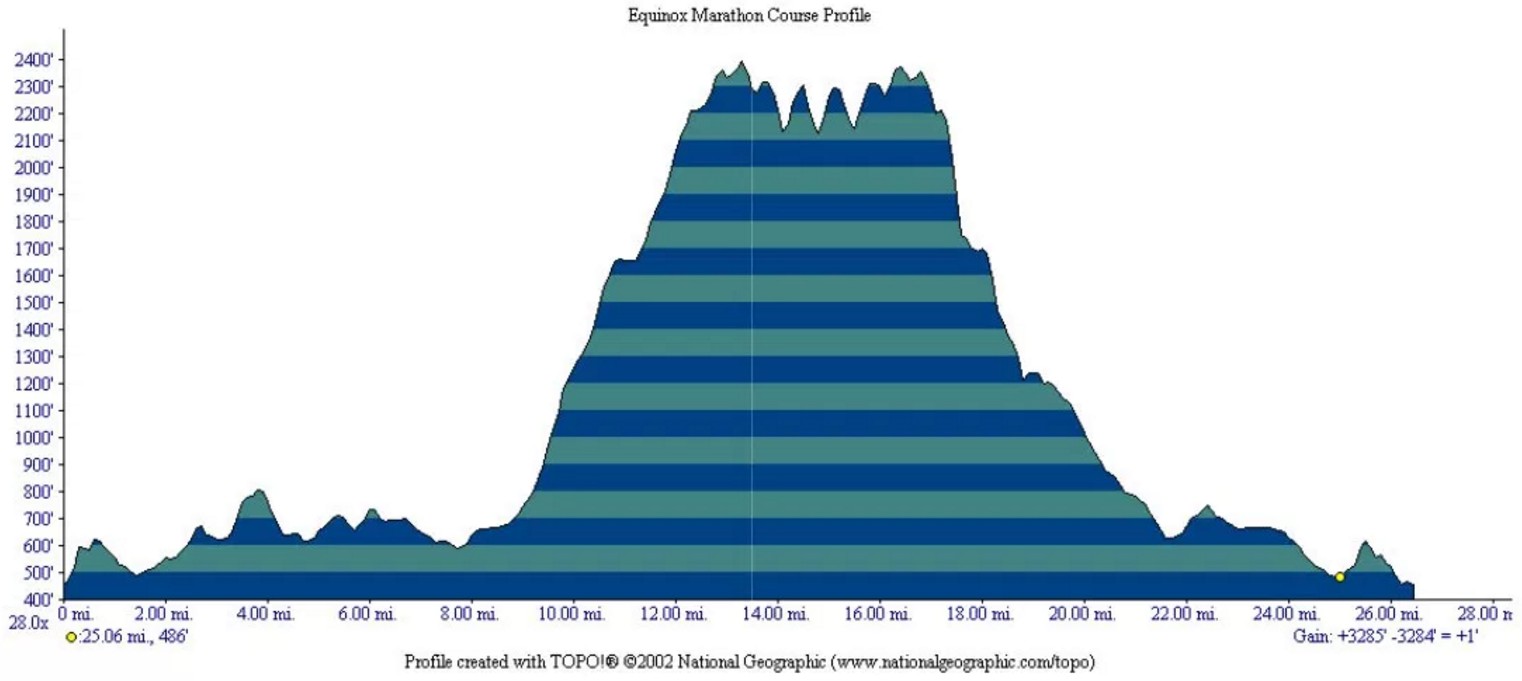 |
 |
| Main | The Equinox: Race & Course |
Physics
for Runners 101 |
Rooty Trails |
Killer Hills |
Downhill Dash |
Flat to the Finish |
How to Run the Equinox |
Sources & Further Reading |

|
Completing any marathon is difficult. The varied topography and ground conditions of the Equinox Marathon, however, take that difficulty to a new mental and physical level. Each year since the race began in 1963, Alaska’s most accomplished distance runners have been humbled by its hills, tripped by its rugged roots and gravel, and beat up by its unforgiving pavement. |
| The
course's elevation profile below shows that racers must
conquer not only 26.2 miles but also 3,285 feet in
elevation gain and loss to reach the finish line. For
some perspective on this feat, Seward's famed Mt.
Marathon mountain race covers "only" 3,022 vertical feet
in just 3 miles. While the only truly consistent feature of the Equinox topography is the unrelenting torture it causes, the course can be divided into four sections for physics-based analysis:
Throughout this website, the
various forces at work on an Equinox runner during
all four sections are individually examined and,
using this information, specific recommendations on
optimal running form are made for each section of
the course. Adopting these scientific guidelines
will not make the race easy, but physics-inspired
techniques can help maximize your mass as you
accelerate to the finish! |
